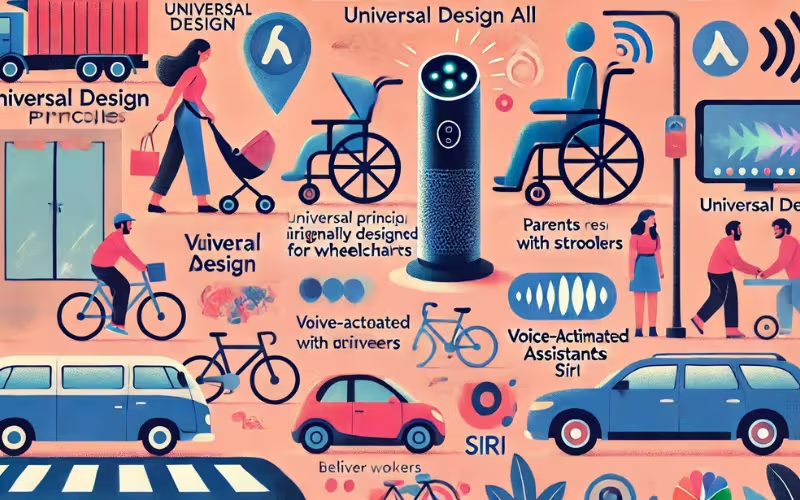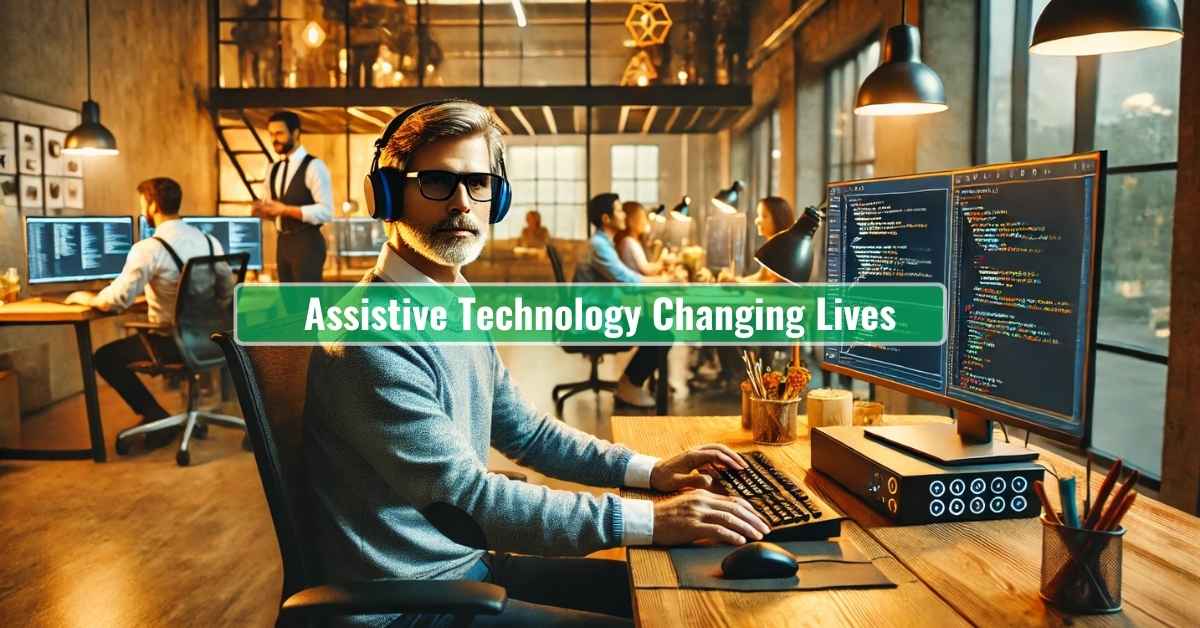Imagine a young man named Jim, who was born with a severe visual impairment. From an early age, Jim dreamed of becoming a software developer, despite the challenges his disability presented. Recently, with the help of advanced screen readers and voice recognition software, he not only mastered coding but also secured his dream job at a leading tech company. His story showcases how assistive technology is not just bridging gaps but creating opportunities for individuals to thrive. Stories like Jim’s highlight how accessibility, once a major hurdle for individuals with disabilities, is being transformed by assistive technology (AT). This rapidly evolving field is breaking barriers and enabling millions to achieve unparalleled independence in daily life, education, work, and social interactions.
What is Assistive Technology?
Assistive technology encompasses a diverse array of tools, devices, and software designed to enhance the lives of people with disabilities. These innovations include screen readers for the visually impaired, hearing aids for those with hearing loss, and mobility aids such as advanced prosthetics and powered wheelchairs. Specialized applications like text-to-speech programs and voice recognition tools assist in educational and professional environments, while smart home technologies and wearable devices improve everyday living and independence. From robotic exoskeletons to cutting-edge accessibility apps, AT fosters inclusion and equal opportunities.
How Assistive Technology is Transforming Lives

Here is how Assistive Technologies changing our lives and going to change the world.
1. Improving Mobility
For individuals with physical disabilities, mobility aids have been life-changing. Powered wheelchairs, prosthetics, and stair-climbing devices provide newfound freedom. Breakthroughs such as robotic exoskeletons and smart canes further enhance mobility, enabling users to navigate their surroundings with ease. For example, a man with a spinal cord injury recently described how a robotic exoskeleton enabled him to stand and walk during therapy sessions, restoring his confidence and independence alongside his mobility.
2. Enhancing Communication
Communication challenges can be among the most isolating aspects of a disability. Assistive technologies such as speech-generating devices (SGDs), advanced hearing aids, and real-time transcription apps have transformed interactions. SGDs allow individuals with speech impairments to construct sentences using touchscreens or eye-tracking systems. Modern hearing aids now feature Bluetooth connectivity, enabling seamless integration with smartphones for calls and media. Additionally, real-time transcription apps convert spoken words into text instantly, empowering people with hearing loss to follow conversations during meetings or events. These tools ensure effective communication and greater participation in society.
3. Boosting Access to Education
In the education sector, AT tools like text-to-speech software, adaptive keyboards, and specialized learning apps have created inclusive classrooms. Students with dyslexia, ADHD, or physical disabilities can access personalized resources, leveling the playing field and promoting academic success.
4. Expanding Employment Opportunities
Workplaces are increasingly adopting AT to support employees with disabilities. Tools like screen readers, ergonomic workstations, and real-time captioning software enable individuals to excel professionally. These advancements contribute to more diverse and inclusive work environments, benefiting both employees and employers.
5. Enhancing Daily Living
Assistive technology also plays a significant role in daily life. Smart home devices such as voice-controlled assistants (e.g., Alexa and Google Home) and automated lighting systems enable independent living. Wearable health monitors help individuals manage medical conditions, promoting healthier lifestyles.
Addressing Accessibility Challenges
Despite its benefits, access to assistive technology remains a challenge due to factors like cost, lack of awareness, and insufficient training. Governments, nonprofits, and tech companies are working to bridge this gap by:
- Offering subsidies and grants to make AT affordable. For instance, the U.S. Assistive Technology Act funds state programs that provide access to essential devices. Nonprofits like the Christopher & Dana Reeve Foundation also offer grants for mobility aids, while companies like Microsoft donate accessible devices to underserved communities.
- Developing open-source solutions to reduce costs.
- Providing education and training for users, caregivers, and professionals.
The Importance of Universal Design

Universal design principles are integral to creating products that are accessible to all. By prioritizing inclusivity, these designs benefit both individuals with disabilities and the broader population. For example, curb cuts originally designed for wheelchair users are now used by parents with strollers, delivery workers, and cyclists. Similarly, voice-activated assistants like Alexa and Siri, though indispensable for people with impairments, have become popular mainstream tools. By embedding accessibility features into everyday devices, manufacturers normalize inclusivity and reduce the need for specialized equipment.
The Future of Assistive Technology
Advances in artificial intelligence, machine learning, and robotics promise a bright future for assistive technology. As these innovations become more sophisticated and accessible, they will continue to close the accessibility gap, empowering millions to live independent and fulfilling lives.
Assistive technology is more than a tool—it is a testament to human ingenuity and compassion. By supporting its development and widespread adoption, we can create a world where accessibility is a fundamental right, not an afterthought.


